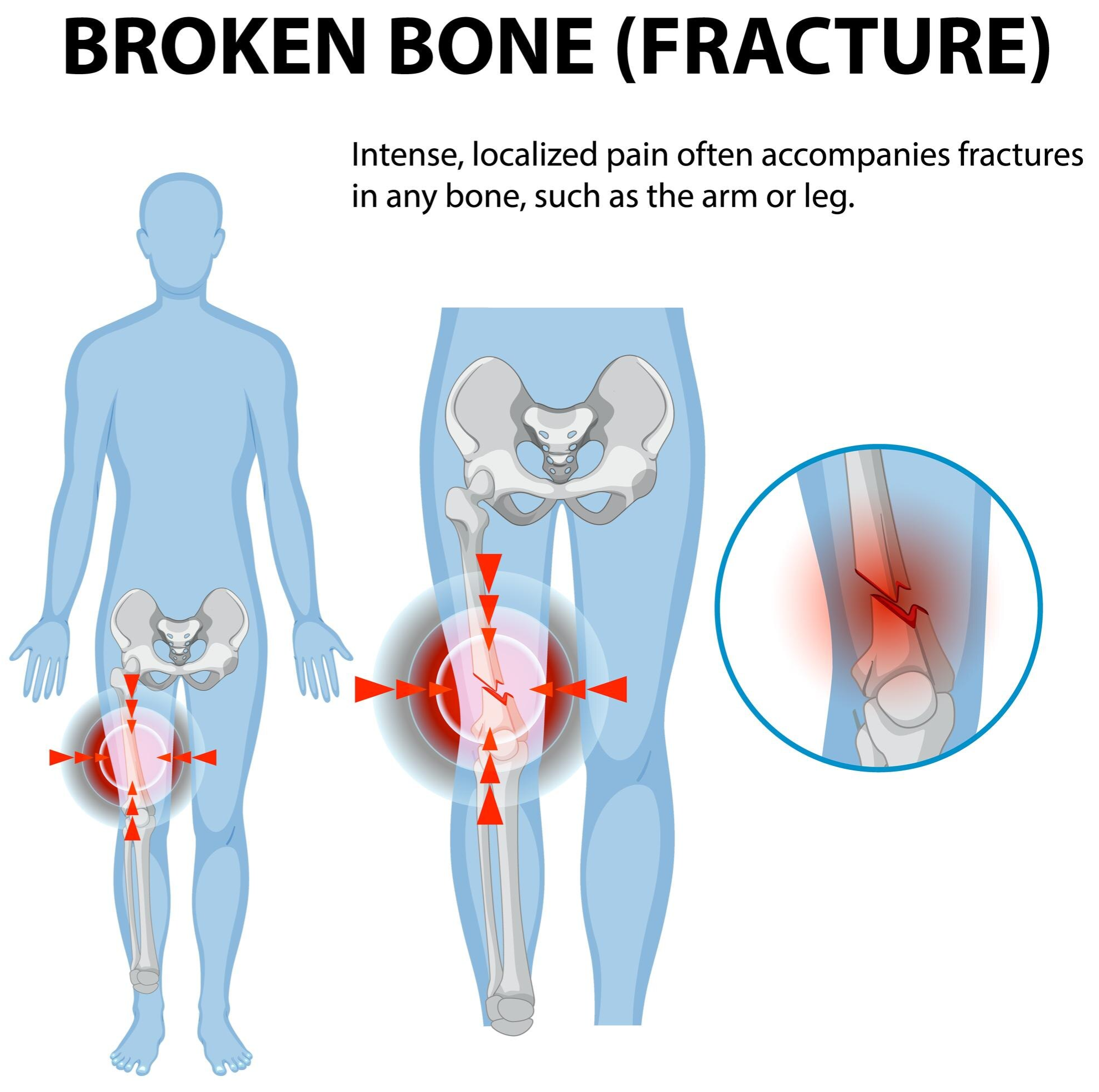Sciatica is a common condition that can lead to a variety of symptoms, including sharp pain, numbness, and tingling sensations, typically in the lower back, buttocks, and legs.
However, many people experiencing sciatica also report knee pain and swelling. So, the question arises: Can sciatica cause knee pain and swelling?

In this blog post, we will explore how sciatica can affect the knees, the potential connection between sciatica and knee pain, and what can be done to manage the symptoms.
We will break down the mechanisms behind sciatica and knee pain, common symptoms, possible treatments, and when to seek professional medical advice.
Understanding Sciatica
Sciatica is a symptom, not a diagnosis in itself. It refers to the pain that radiates along the sciatic nerve, which is the longest nerve in the human body.
The sciatic nerve originates in the lower spine and extends down through the hips, buttocks, and legs. Sciatica usually occurs when the sciatic nerve becomes irritated or compressed, leading to inflammation, pain, and discomfort.
The most common cause of sciatica is a herniated disk, where a portion of a spinal disc presses against the nerve. Other potential causes include spinal stenosis, degenerative disk disease, or a muscle strain that impinges on the nerve.
The pain caused by sciatica typically travels down one leg, and can range from a dull ache to a sharp, shooting pain.
Can Sciatica Cause Knee Pain?
While sciatica is most commonly associated with pain along the lower back, buttocks, and thighs, many people wonder if sciatica can cause knee pain. The short answer is yes; sciatica can lead to knee pain, but the connection is often indirect. Let’s explore why this happens.
Radiation of Sciatic Pain
- Sciatica causes pain that radiates along the path of the sciatic nerve, which can extend all the way to the knees. As the nerve becomes irritated or compressed, the pain may spread down the back of the thigh and reach the knee area. This referred pain can make the knee feel painful, despite no direct injury to the knee joint itself.
Nerve Impingement and Sensory Disruptions
- In many cases, sciatica involves nerve impingement, such as a herniated disc or other spinal issues, that disrupt normal nerve function.
- When the sciatic nerve is pinched or compressed, it can cause not only pain but also changes in sensation and motor function. This disruption can lead to altered sensations in the leg, including the knee, causing the perception of pain, weakness, or instability.
- Moreover, nerve compression can also interfere with the signals that control muscle movements in the leg. This could lead to muscle weakness in the quadriceps or hamstrings, which can affect the stability of the knee joint. When the muscles around the knee are weak or not functioning properly, it can result in discomfort or pain.
Altered Gait and Posture
- Another reason sciatica can lead to knee pain is due to changes in how a person walks. When experiencing sciatica, individuals may instinctively alter their posture or gait to avoid pain in the lower back or legs. This altered walking pattern can place additional stress on the knee joint, leading to discomfort, pain, or even swelling.
- For example, if someone with sciatica favors one leg over the other to avoid pain, they may place more weight on the knee of the unaffected leg. Over time, this added stress can result in knee pain, especially if the knee joint is already compromised or weakened.
Can Sciatica Cause Knee Swelling?
While knee pain from sciatica is more commonly reported, swelling in the knee due to sciatica is less typical but still possible. Here’s how sciatica could lead to knee swelling:
Muscle Imbalance and Inflammation
As mentioned earlier, sciatica can lead to muscle weakness or imbalance. If the muscles around the knee are weakened due to nerve interference, they may no longer provide the necessary support for the joint. Over time, this can lead to strain and stress on the knee joint, potentially causing inflammation and swelling.
Additionally, if sciatica results in altered gait, it can cause the knee to move in an unnatural way, which can irritate the knee joint and lead to fluid buildup. This could result in the appearance of swelling around the knee.
Compensation for Leg Weakness
In cases of sciatica where there is significant leg weakness or instability, people may compensate by putting extra strain on other parts of the leg.
For example, they might rely on the knee joint to support more weight than it is designed to bear. Over time, this compensation can lead to knee joint inflammation and swelling as the body reacts to the extra load placed on the joint.
Chronic Inflammation and Joint Stress
Sciatica can lead to long-term inflammation in the lower back and leg, which, in turn, may affect the knee. When the sciatic nerve is irritated, it sends signals that can cause the muscles and tissues around the knee to tighten or contract in response to the pain. This prolonged muscle tension can lead to increased pressure on the knee joint, causing discomfort and swelling.
Symptoms of Knee Pain Related to Sciatica
When sciatica causes knee pain, the symptoms may differ from those typically associated with knee injuries or conditions. Some common symptoms of knee pain related to sciatica include:
-
Radiating pain: Pain that starts in the lower back or buttock and radiates down to the knee, sometimes traveling further down the leg.
-
Numbness or tingling: The knee may feel numb or tingly, which is a sign of nerve involvement.
-
Weakness: There may be a feeling of weakness or instability in the knee, especially when trying to bear weight on the leg.
-
Pain with movement: The knee may hurt when walking, climbing stairs, or even bending.
-
Increased discomfort with prolonged sitting or standing: Staying in one position for too long may exacerbate the pain or discomfort in the knee.
Treatment Options for Knee Pain and Swelling from Sciatica
If you’re dealing with knee pain and swelling caused by sciatica, there are several treatment options available to help manage the symptoms and address the underlying cause. Here are some of the most common treatment strategies:
Physical Therapy
- Physical therapy is one of the most effective treatments for both sciatica and knee pain. A physical therapist can design a personalized exercise program that helps strengthen the muscles around the knee, improve flexibility, and address any imbalances caused by sciatica.
- Stretching exercises can help alleviate pressure on the sciatic nerve, while strengthening exercises can improve overall knee stability.
Pain Management
- For those experiencing significant pain from sciatica that radiates to the knee, over-the-counter pain relievers such as ibuprofen or acetaminophen may help reduce pain and inflammation.
- For more severe cases, a doctor may prescribe stronger medications or recommend treatments such as corticosteroid injections.
Heat and Cold Therapy
- Applying heat or cold to the affected area can help relieve pain and inflammation. Cold packs can reduce swelling, while heat pads can help relax tight muscles and improve blood circulation to the affected area. Be sure to apply cold or heat in intervals of 15-20 minutes to avoid skin damage.
Chiropractic Care
- Chiropractic care involves spinal manipulation, which can help relieve pressure on the sciatic nerve and improve overall spinal alignment. Some individuals find relief from both sciatica and knee pain through regular chiropractic adjustments.
Surgical Intervention
- In cases where sciatica is caused by a herniated disc or spinal stenosis and conservative treatments have not provided relief, surgery may be necessary.
- A surgeon may perform a discectomy or a laminectomy to relieve pressure on the sciatic nerve, which can, in turn, alleviate knee pain and swelling.
Lifestyle Modifications
- Maintaining a healthy weight, avoiding prolonged sitting or standing, and incorporating regular movement into your routine can all help reduce the impact of sciatica and prevent knee pain.
- Additionally, adopting proper posture and ergonomics can reduce strain on the sciatic nerve and improve overall function.

When to Seek Medical Attention
If your knee pain and swelling persist or worsen, it’s essential to seek medical attention. This is especially true if you experience any of the following:
-
Severe pain or swelling: If your knee pain or swelling becomes severe and unmanageable, consult a healthcare professional for an evaluation.
-
Numbness or tingling: If you experience persistent numbness or tingling in your knee or leg, it may indicate nerve involvement and requires attention.
-
Inability to walk or bear weight: If you are unable to walk or put weight on your knee due to pain or weakness, it is important to seek medical care.
Conclusion
In conclusion, while sciatica is primarily associated with pain in the lower back, buttocks, and legs, it can indeed cause knee pain and swelling in some individuals.
The pain often radiates down the leg, and the knee may be affected due to nerve compression, muscle imbalances, or altered gait.
If you’re experiencing knee pain and swelling along with sciatica, it’s important to consult a healthcare provider to determine the best treatment plan and address both the sciatic nerve and knee symptoms.
By understanding the connection between sciatica and knee pain, you can take proactive steps to manage your symptoms and improve your overall mobility and quality of life.
References
Sciatica and Knee Pain: Can Sciatica Cause Knee Pain? – https://www.ncbi.nlm.nih.gov/pmc/articles/PMC4523190/
The Impact of Sciatica on Lower Limb Function – https://pubmed.ncbi.nlm.nih.gov/21247540/
The Role of Nerve Compression in Musculoskeletal Pain: A Review – https://www.ncbi.nlm.nih.gov/pmc/articles/PMC4748586/
Sciatica and Altered Gait: Effect on Joint Stress – https://www.ncbi.nlm.nih.gov/pmc/articles/PMC3227225/